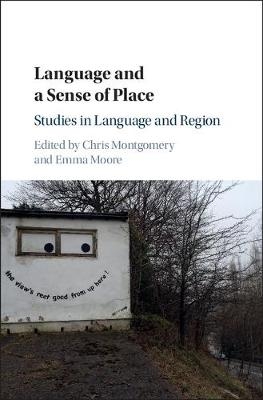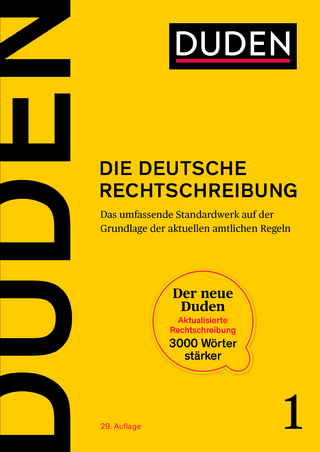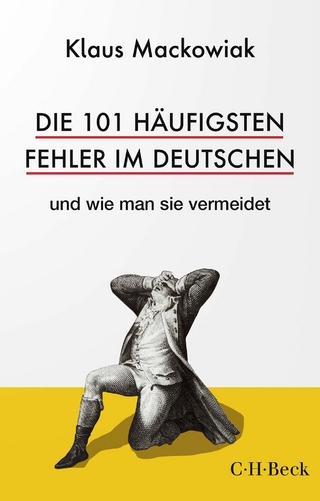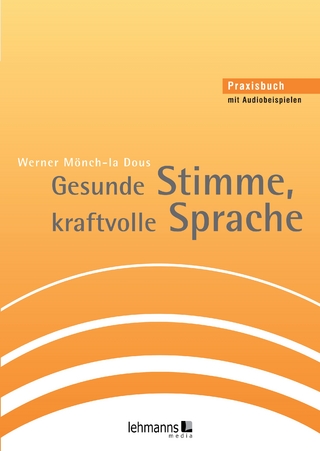
Language and a Sense of Place
Cambridge University Press (Verlag)
978-1-107-09871-8 (ISBN)
Place has always been central to studies of language, variation and change. Since the eighteenth century, dialectologists have been mapping language features according to boundaries - both physical and institutional. In the twentieth century, variationist sociolinguists developed techniques to correlate language use with speakers' orientations to place. More recently, perceptual dialectologists are examining the cognitive and ideological processes involved in language-place correlations and working on ways to understand how speakers mentally process space. Bringing together research from across the field of language variation, this volume explores the extent of twenty-first century approaches to place. It features work from both established and influential scholars, and up and coming researchers, and brings language variation research up to date. The volume focuses on four key areas of research: processes of language variation and change across time and space; methods and datasets for regional analysis; perceptions of the local in language research; and ideological representations of place.
Chris Montgomery is a Lecturer in Dialectology at the University of Sheffield. His research focuses on non-linguists' perceptions of dialects. He has published articles in the Journal of Sociolinguistics and Studies in Variation, Contacts and Change in English. He was the editor of Cityscapes and Perceptual Dialectology (with Jennifer Cramer, 2016) and of a special issue of English Language and Linguistics (with Karen Corrigan, 2015) focussing on the role of place in historical linguistics. Emma Moore is a Senior Lecturer in Sociolinguistics at the University of Sheffield. Her research explores how individuals and communities use language to construct social styles and create social meaning. Emma's most recent project is an Arts and Humanities Research Council funded project exploring language variation and change in a rather unique place: the Isles of Scilly. She has published in the Journal of Sociolinguistics, Language Variation and Change, and Language in Society, and is on the Editorial Board of Language in Society and Gender and Language.
Part I. Changing Places: 1. Changing places: tracking innovation and obsolescence across generations Sali A. Tagliamonte; 2. Changing sounds in a changing city: an acoustic phonetic investigation of real-time change over a century of Glaswegian Jane Stuart-Smith, Brian José, Tamara Rathcke, Rachel Macdonald and Eleanor Lawson; 3. Local vs. supralocal: preserving language and identity in Newfoundland Sandra Clarke; 4. Variation and change in the realisation of /r/ in an isolated Northumbrian dialect Warren Maguire; Part II. Describing Places: 5. Corpora for regional and social analysis Karen P. Corrigan; 6. Using archives to conduct collaborative research on language and region Fiona Douglas; 7. Maps and mapping in (perceptual) dialect geography Chris Montgomery; 8. Which way to look?: perspectives on 'urban' and 'rural' in dialectology David Britain; Part III. Identifying Places: 9. Identifying places: the role of borders Dominic Watt and Carmen Llamas; 10. 'I stole it from a letter, off your tongue it rolled': the performance of dialect in Glasgow's indie music scene Miriam Krause and Jennifer Smith; 11. Where the black country meets 'black Barnsley': dialect variation and identity in an ex-mining community of Barnsley Kate Burland; 12. 'The land steward wouldn't have a woman farmer': the interaction between language, life trajectory and gender in an island community Emma Moore and Paul Carter; Part IV. Enregistering Places: 13. Characterological figures and expressive style in the enregisterment of linguistic variety Barbara Johnstone; 14. Enregisterment, and the social meaning of howay': dialect and identity in north-east England Julia Snell; 15. Indexing Acadian identities Ruth King; 16. 'Turtlely amazing': the enregisterment of 'Yorkshire' dialect and the possibility of GOAT fronting as a newly-enregistered feature Paul Cooper.
| Erscheinungsdatum | 02.06.2017 |
|---|---|
| Zusatzinfo | 15 Maps; 7 Halftones, black and white; 75 Line drawings, black and white |
| Verlagsort | Cambridge |
| Sprache | englisch |
| Maße | 156 x 235 mm |
| Gewicht | 740 g |
| Themenwelt | Geisteswissenschaften ► Sprach- / Literaturwissenschaft ► Sprachwissenschaft |
| Sozialwissenschaften ► Soziologie ► Spezielle Soziologien | |
| ISBN-10 | 1-107-09871-8 / 1107098718 |
| ISBN-13 | 978-1-107-09871-8 / 9781107098718 |
| Zustand | Neuware |
| Informationen gemäß Produktsicherheitsverordnung (GPSR) | |
| Haben Sie eine Frage zum Produkt? |
aus dem Bereich


